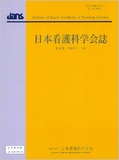Japanese
English
- 販売していません
- Abstract 文献概要
- 参考文献 Reference
要旨
目的:三次救急初療に従事する救急看護師の急性心筋梗塞患者に対するヒューマンケアリングを基盤とした看護実践を明らかにする.
方法:質的記述的研究デザインを用いた.救急看護師5名に対し,Watson(2012/2014)のカリタスプロセスとTorres(1986/1992)が示したWatsonの解釈モデルの5つのグループを枠組みとした半構造化面接を実施した.
結果:救急看護師のヒューマンケアリングを基盤とした看護実践は60項目抽出され,21のカテゴリに分類された.救急看護師は,【ケアリングの科学を支える哲学的基盤】によって患者を全人的に捉え,人間的尊厳を守り,最大限の【ニーズの支援】をするヒューマンケアリングを実践していた.三次救急初療の特徴から,その実践には【患者との関係構築】,【看護過程の展開】,【形而上学的アプローチ】という工夫があった.
結論:救急看護師のケアリングは,一期一会の出会いの中で信頼関係を構築しながら,全人的ニーズを満たす実践であった.
Objective: To clarify emergency department nurses' nursing practice for critically ill patients with acute myocardial infarction (AMI) based on Jean Watson's Theory of Human Caring (1988/1992).
Method: This research used a qualitative descriptive study design. Semi-structured interviews were conducted with five emergency department nurses. The interviews used the Caritas process of the Human Caring Theory (Watson, 2012/2014) and the five groups of Watson's explanatory models presented by Torres (1986/1992) as a framework.
Results: Emergency department nurses' nursing practices based on the Human Caring Theory for critically ill patients with AMI were extracted 60 codes and classified into 21 categories. It was found that the nurses approach the patients holistically with a philosophical foundation that endorses the science of caring, protects human dignity, and practices human caring to maximize support for the patient's greatest needs. Because of the specific characteristics of care, the practice is devised to build relationships with patients, develop nursing processes, and adopt a metaphysical approach.
Conclusion: The emergency department nurses' nursing practice based on the Human Caring theory is provided by addressing their holistic needs, including saving the patient's life whilst building a relationship of trust.
Copyright © 2022, Japan Academy of Nursing Science. All rights reserved.


